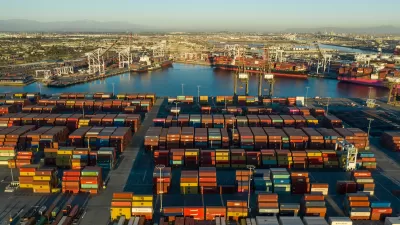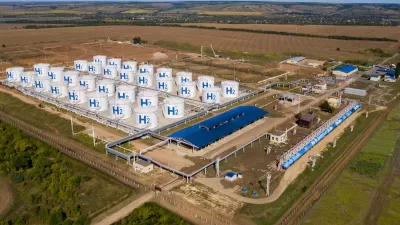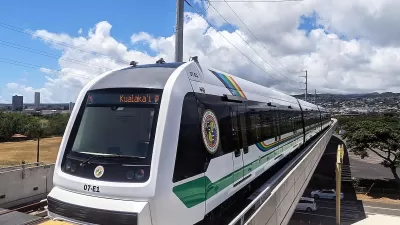Philip Bump contemplates a future in which Arctic Ocean trade routes give rise to thriving port cities dotting the northern coasts of North America and Eurasia alike.
Completed nearly a century ago, in what was arguably the most ambitious feat of engineering in human history, the Panama Canal opened the way for a new era of faster, better-connected global trade. Are trade routes across the Arctic Ocean next?
Major General Francis G. Mahon of the U.S. Northern Command says it's only a matter of time. “There are many, many others who have economic interests who would like to harvest [resources in the Arctic] and sell them on the economic market," he said at a panel discussion in the nation's capital last weekend. When trade between China and Europe stands to cut 40 percent off of existing routes through Panama or around Cape Horn, “From an economic standpoint, you know that will be exploited as quickly as possible.”
Writes Bump, "The northern coast of Canada is already dotted with small settlements. Imagine the growth of massive ports, connected by railroad to airports or cities or other commercial infrastructure. Imagine the Hudson Bay ringed with city after city offshoring huge container ships and tankers. Imagine a 'real coast,' the rush to build it out."
But there are complications that stand in the way of the move to build out trade infrastructure in the north. For one, settlements there depend on permafrost, and buildings and roads in the Yukon have collapsed with rising temperatures. In addition, "container ships and other large vessels draw a lot of water, requiring dredged shipping lanes and certain water depths. But the melting Arctic ice will occur at the same time as significant rise in sea levels, which could potentially shift which areas are most suitable for shipping. It also means that all of the standard building-on-the-coast caveats apply."
Of course, if it were that simple, it would have happened ages ago. But the thawing of the Arctic may make it feasible before too long.
FULL STORY: World superpowers are about to get a brand new coast

Maui's Vacation Rental Debate Turns Ugly
Verbal attacks, misinformation campaigns and fistfights plague a high-stakes debate to convert thousands of vacation rentals into long-term housing.

Planetizen Federal Action Tracker
A weekly monitor of how Trump’s orders and actions are impacting planners and planning in America.

In Urban Planning, AI Prompting Could be the New Design Thinking
Creativity has long been key to great urban design. What if we see AI as our new creative partner?

Portland Raises Parking Fees to Pay for Street Maintenance
The city is struggling to bridge a massive budget gap at the Bureau of Transportation, which largely depleted its reserves during the Civd-19 pandemic.

Spokane Mayor Introduces Housing Reforms Package
Mayor Lisa Brown’s proposals include deferring or waiving some development fees to encourage more affordable housing development.

Houston Mayor Kills Another Bike Lane
The mayor rejected a proposed bike lane in the Montrose district in keeping with his pledge to maintain car lanes.
Urban Design for Planners 1: Software Tools
This six-course series explores essential urban design concepts using open source software and equips planners with the tools they need to participate fully in the urban design process.
Planning for Universal Design
Learn the tools for implementing Universal Design in planning regulations.
Gallatin County Department of Planning & Community Development
Heyer Gruel & Associates PA
JM Goldson LLC
City of Camden Redevelopment Agency
City of Astoria
Transportation Research & Education Center (TREC) at Portland State University
Jefferson Parish Government
Camden Redevelopment Agency
City of Claremont





























